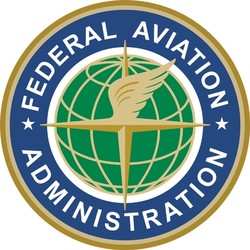Outlines The ARC's Organization, Responsibilities, And Tasks
This FAA has released the charter for the Aviation Rulemaking Committee (ARC) which will advise the agency on the establishment of the performance standards and requirements for micro unmanned aircraft systems.

The sponsor of the micro UAS ARC is the Director of the UAS Integration Office (AUS-1). The charter outlines the micro UAS ARC’s organization, responsibilities, and tasks.
The FAA contemplated a “micro” classification of small UAS (sUAS) in the Notice of Proposed Rulemaking (NPRM) entitled Operation and Certification of Small Unmanned Aircraft Systems (sUAS Operation and Certification Part 107 Rule), which published on February 23, 2015. As discussed in the NPRM, a sUAS would be defined as a micro UAS if it weighed no more than 4.4 pounds (2 kilograms) and was constructed of frangible materials “that break, distort, or yield on impact so as to present a minimal hazard to any person or object.”
With additional operating restrictions, an operator of a micro UAS would be able to conduct flights over “any person.” The FAA invited “commenters to submit data and any other supporting documentation on whether the micro UAS classification should be included in the final rule.”
After reviewing comments, the FAA has decided not to proceed with a micro UAS classification in the sUAS Operation and Certification Part 107 Rule, and has determined that further engagement with industry and stakeholders is needed before conducting rulemaking to address the regulatory framework for micro UAS.
The micro UAS ARC will provide a forum for discussion and development of recommendations that will be submitted to FAA for consideration in developing an NPRM regarding the classification and operation of micro UAS. The ARC is specifically tasked to consider recommendations for a performance-based standard that would allow for micro UAS to be operated over people who are not directly participating in the operation of the UAS or under a covered structure.
Specifically, the micro UAS ARC will:
- Develop recommendations for a performance-based standard for the classification of micro UAS. In developing the recommendation, the micro UAS ARC should consider, at a minimum, current and past research on human injury thresholds, hazard and risk assessment methodologies, and acceptable levels of risk to persons not directly participating in the operation.
- Identify means-of-compliance for manufacturers to show that unmanned aircraft meet the performance-based safety requirement. The ARC should evaluate the use of consensus standards as a means of compliance, developing sandardized test methods, and other means to demonstrate compliance with the standard. The ARC should also consider and recommend how the FAA and manufacturers should determine compliance with the performance-based standard.
- Recommend operational requirements for micro UAS appropriate to the recommended performance-based safety requirement.
The micro UAS ARC will develop and submit to the FAA a recommendation report by April 1, 2016.
The FAA will establish a committee of members representing a diverse set of aviation stakeholders, to include the UAS industry. The FAA will select members based on their familiarity and experience with sUAS designed for aerial data collection and photography with a focus on safety features and miniaturization of the aircraft and sensors.
Members will also be selected based on their knowledge and experience with performance-based regulations for operations in the National Airspace System (NAS), manufacture of unmanned aircraft, development of consensus standards, human injury research, and consumer product testing techniques. Membership will be balanced in viewpoints, interests, and knowledge of the committee’s objectives and scope.
(Source: FAA Micro UAS Charter Document)
 Senator Pushes FAA to Accelerate Rocket Launch Licensing
Senator Pushes FAA to Accelerate Rocket Launch Licensing Classic Aero-TV: RJ Gritter - Part of Aviations Bright New Future
Classic Aero-TV: RJ Gritter - Part of Aviations Bright New Future Aero-FAQ: Dave Juwel's Aviation Marketing Stories -- ITBOA BNITBOB
Aero-FAQ: Dave Juwel's Aviation Marketing Stories -- ITBOA BNITBOB ANN's Daily Aero-Linx (10.27.24)
ANN's Daily Aero-Linx (10.27.24) ANN's Daily Aero-Term (10.27.24): Clearance Void If Not Off By (Time)
ANN's Daily Aero-Term (10.27.24): Clearance Void If Not Off By (Time)



